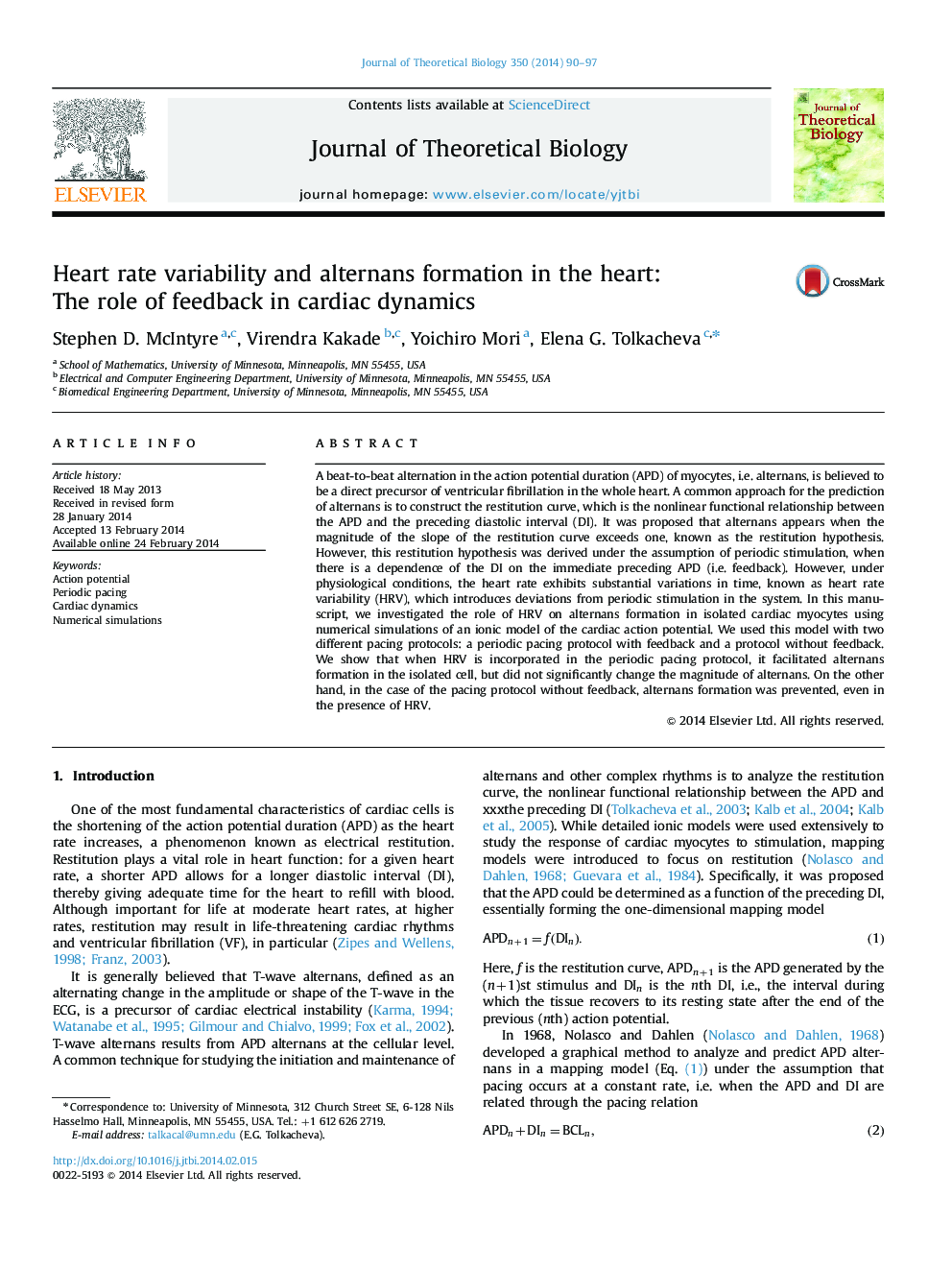| Article ID | Journal | Published Year | Pages | File Type |
|---|---|---|---|---|
| 4496164 | Journal of Theoretical Biology | 2014 | 8 Pages |
A beat-to-beat alternation in the action potential duration (APD) of myocytes, i.e. alternans, is believed to be a direct precursor of ventricular fibrillation in the whole heart. A common approach for the prediction of alternans is to construct the restitution curve, which is the nonlinear functional relationship between the APD and the preceding diastolic interval (DI). It was proposed that alternans appears when the magnitude of the slope of the restitution curve exceeds one, known as the restitution hypothesis. However, this restitution hypothesis was derived under the assumption of periodic stimulation, when there is a dependence of the DI on the immediate preceding APD (i.e. feedback). However, under physiological conditions, the heart rate exhibits substantial variations in time, known as heart rate variability (HRV), which introduces deviations from periodic stimulation in the system. In this manuscript, we investigated the role of HRV on alternans formation in isolated cardiac myocytes using numerical simulations of an ionic model of the cardiac action potential. We used this model with two different pacing protocols: a periodic pacing protocol with feedback and a protocol without feedback. We show that when HRV is incorporated in the periodic pacing protocol, it facilitated alternans formation in the isolated cell, but did not significantly change the magnitude of alternans. On the other hand, in the case of the pacing protocol without feedback, alternans formation was prevented, even in the presence of HRV.
